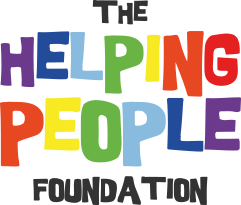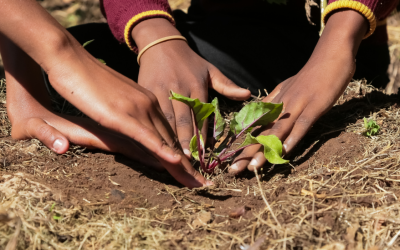CURRENT LIVING CONDITIONS IN GUINEA-BISSAU
SCHOOL
Two thirds of all children in Guinea-Bissau attend school. The country has compulsory education. This includes 6 years of elementary school education. But due to a shortage of teachers, a lack of school buildings and the fact that many children have to help out at home from an early age, the average time spent at school is only three and a half years.There are also secondary schools in the larger cities. The school period is 4 years. But since school fees increase when attending secondary school, many families cannot afford it. The country has 4 universities.In 2015, the CIA's World Factbook put the number of illiterate people over the age of 15 at 40.1%.
MEDICINE
The medical situation in one of the poorest countries in the world is very bad. The average life expectancy for women is 60.2 years, for men 56.3 years. 13.8% of children die before reaching the age of one. 22.3% before they are 5 years old. This makes infant mortality one of the highest in the world.
According to the WHO, there were 0.1 doctors per 1000 inhabitants in 2009. Many people die of malaria, gastrointestinal infections, respiratory diseases or the consequences of HIV.Besides trained professionals, the country lacks not only medical equipment. The dilapidated water network and the lack of electricity make the work of the few doctors difficult. No surgical procedures have been performed in the town of Gabú for 10 years.
Water
Despite the rainy season with its high rainfall, there is a lack of drinking water during the dry season, especially in the areas near the coast. The wells dry up and the water quality of the smaller lakes is poor. Overall, according to WHO and UNICEF, only 40.3% of the urban population had access to clean drinking water in 2000. This is despite the fact that there are many more renewable water resources in the small state. In 2014, according to the World Bank Group, the fresh water reserve was 9,271 cubic metres per capita. In 2006, only 0.6 % of freshwater resources were withdrawn, according to the Federal Agency for Civic Education.
Among the reasons for the water shortage are the government's inability to act, the ailing infrastructure and climate change. But deforestation is also fuelling water scarcity. Due to the lack of vegetation, severe soil erosion occurs time and again, as a result of which the soils are eroded and rain can no longer seep into the eroded soils. The result is a falling water table.
nutrition
The staple food of the people of Guinea-Bissau is rice on the coast and millet in the interior. The rice either comes from their own plantations or is imported from Thailand. Furthermore, yams, sweet potatoes, cassava, tomatoes, onions and black-eyed peas are also cooked. In the coastal regions, fish and shellfish are also processed. Occasionally, it is also cooked with beef, goat meat or chicken. Even monkey or antelope meat is sometimes on the table. The food is complemented by tropical fruits and nuts, such as bananas, papayas, mangoes, oranges, grapefruits and peanuts, as well as cashews, Bambara peanuts and ground nuts. In addition, milk and dairy products such as curd and whey are processed. Season with pepper, chilli and Guinea pepper. A popular dish is yassa, a rice dish with meat or fish, seasoned with onions and lemons. People like to drink sweet green tea called "warga". But palm wine or wine made from cashew nuts is also widespread.

GEOGRAPHY
Guinea-Bissau is located between 13° and 17° west longitude and 11° and 12° north latitude in the west of West Africa and Upper Guinea. It borders Senegal to the north and Guinea to the east. Of the total area of 36,125 km², 28,120 km² is land, the remaining 8005 km² is water (see goruma). This size corresponds to approximately 76% of the size of Lower Saxony. At only 70 m above sea level, the state lies very low-lying. The highest elevation is the Madina do Boé mountain at 262 metres. The flat interior is bordered by a coastal strip with marshlands that has been strongly fragmented by abrasion.
The most important rivers in the country are the Río Gêba, Río Cacheu and Río Corubal. The Bissagos Archipelago, which includes a total of 88 islands, lies off the coastline. The most important are Ilha de Orango, Caravela, Bubaque, Roxa, Bolama, Uno and Formosa. Due to its location, Guinea-Bissau belongs to the marginal tropics, with a distinct rainy and dry season.
The daily maximum temperatures average between 30 and 36 °C, depending on the season. In general, the state has little seasonal temperature variation. The rainy season lasts from May to November, the main rainy months are July and August. In total, the south receives up to 3,000 mm of rainfall per year, while the north receives around 1,200 mm per year.
Mangroves, swamp forests and oil palms grow in the coastal regions. These are joined by evergreen rainforests. In the east of Guinea-Bissau there is a wet savannah with sparse trees and bush. Crocodiles, hippos, but also pelicans or flamingos live along the rivers and in the swamp regions of the coastal plain. The rainforests are home to pangolins, guenons, prosimians and genets. In the wet savannahs, however, the animal population is severely depleted. Occasionally, antelopes, elephants, buffalos or leopards can still be seen.

History
Little is known about the early history of the country. However, the land was probably inhabited by hunter-gatherers as early as the Stone Age. Since the 13th century, Guinea-Bissau was known as Kaabu, a province of the Mali Empire. After its disintegration, Kaabu remained and became a separate Mandinka kingdom in 1537 with Gabú as its capital.
As early as 1456, the Portuguese slave trader Nuño Tristão travelled through the country. In 1687, the Portuguese established a settlement in what is now the capital of Bissau to conduct their slave and gold trade from there. Until 1879, the area formed an administrative unit with the Cape Verde Islands before it became a separate colony thereafter. The struggle of the indigenous population against the colonial power continued until 1915. Only then did the Portuguese succeed in completely subjugating the country.
In 1951, what was then Portuguese Guinea became an overseas province and thus gained a degree of self-government. The inhabitants could become Portuguese citizens from that time on. Provided they renounced their own culture, henceforth spoke only Portuguese and converted to the Catholic faith. But only the very few heeded this call, so that the regulation was abolished again in 1961. Since Portugal refused to give the overseas province its independence, a guerrilla war broke out against the colonial masters in 1963. Their leader was Amílcar Cabral. In 1973, Guinea-Bissau's independence was finally declared. But it took until 10 September 1974 before Portugal recognised it.
Since independence, the country has not been at peace. The times are marked by power struggles and frequent changes of government. A brief democratic phase ended in August 2015 with the sudden dismissal of Prime Minister Pereira. Since then, the state constitutional bodies have been in a political crisis and have blocked each other's work. The development and reconstruction of the country has thus come to a standstill.
Since 1998, even before the failure of the state, bilateral development cooperation has been on hold. Nevertheless, Germany and other EU institutions, international organisations and bilateral partners are trying to stabilise the country politically and promote it economically.

Economics
The main economic output, the gross domestic product, was 9,548 euros per capita worldwide in 2020. Guinea-Bissau's GDP, on the other hand, was 637 euros per capita, or 1.25 billion euros for the country as a whole. In 2019 the inflation rate was 0.25%. Within the EU, the average over the same period was 0.50%. Compared to Germany, the prices of daily necessities are about 57.51 % lower. The percentage public debt reached 65.9% in 2020, according to the World Bank. A 5% improvement was projected for 2021, thanks to global exports of cashew nuts. With 85% of export earnings, these play the most important role in international trade. According to Statista, the world's largest export partners in 2019 were India with 50%, Belgium with 28% and Ivory Coast with 8%.
A particular problem is the foreign trade economy, with which the country regularly runs a deficit. This is due to the high import expenses for expensive machines, for example. The main importing countries are Portugal (31%), Senegal (20%) and China (10%).
Sources:
Aktion Deutschland Hilft. Alliance of German aid organizations: Guinea-Bissau; URL: https://www.aktion-deutschland-hilft.de/de/fachthemen/afrika/guinea-bissau/ (last accessed 28.01.2022)
Goruma: Guinea-Bissau: geography, map; URL: https://www.goruma.de/laender/afrika/guinea-bissau/landkarte-geografie (last accessed 28.01.2022)
United Nations Development Programme. Human Development Reports: Guinea-Bissau, Human Development Indicators; URL: http://hdr.undp.org/en/countries/profiles/GNB (last accessed 28.01.2022)




